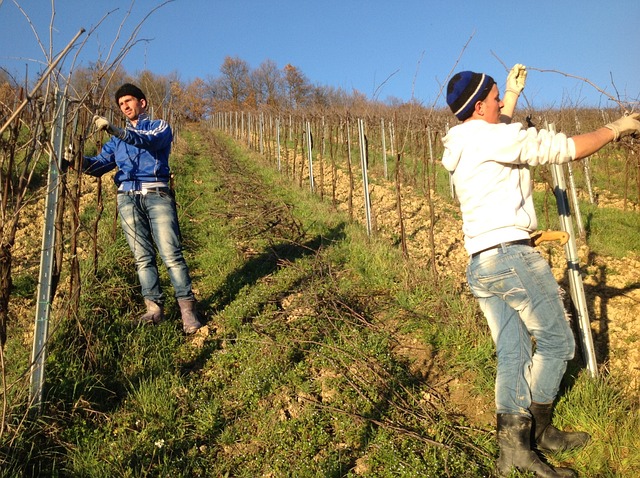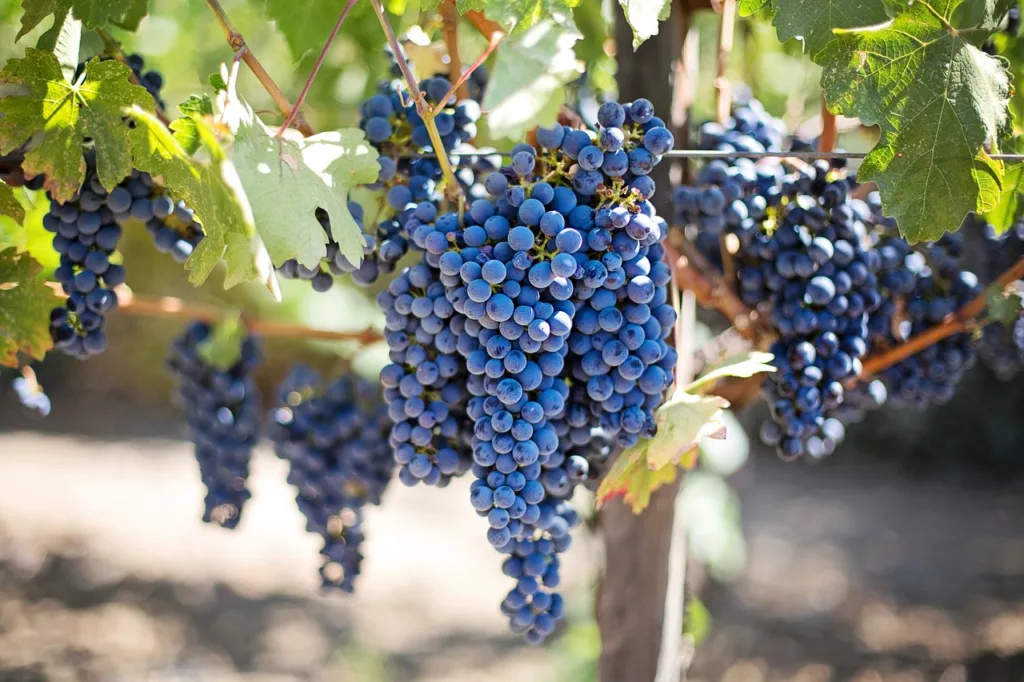“Grapevine” often refers to the long, flexible stems or runners of the grape plant (genus Vitis), which is cultivated to produce grapes used in winemaking, as table grapes, or to make raisins.
Additionally, the term can metaphorically describe informal communication channels within an organization, often connected with the spread of information, rumors, or gossip.
The grapevine holds cultural and symbolic significance, representing abundance and fertility. In different contexts, “grape” may also be used for ornamental purposes in gardening and landscaping.
Grapes are not only delicious but also versatile fruits that can be used in a variety of ways. Whether you want to enjoy them fresh, make grape juice, or even try your hand at winemaking, growing your grapevine can be a rewarding experience.
| Feature | Description |
|---|---|
| Scientific Name | Vitis spp. (Various species within the Vitis genus) |
| Common Varieties | Concord, Cabernet Sauvignon, Chardonnay, Merlot, Pinot Noir, etc. |
| Family | Vitaceae |
| Growth Type | Perennial woody climbing vine |
| Uses | Wine production, table grapes, raisins, ornamental landscaping, symbolic/metaphorical communication |
| Climate | Thrives in temperate climates, but varieties adapted to various climates |
| Soil Type | Well-draining soil is preferable; adaptable to different soil types |
| Propagation | Typically propagated through cuttings or grafting |
| Symbolism | Associated with abundance, fertility, and informal communication (grapevine communication) |
The Right Variety of GrapeVine
When it comes to growing grapes, selecting the right variety is important. There are countless grape varieties available, each with its taste, color, and characteristics.
Some popular table grape varieties include Thompson Seedless, Concord, and Red Flame. If you’re interested in making wine, you may want to consider varieties like Cabernet Sauvignon, Chardonnay, or Merlot.
Consider your climate and growing conditions when choosing a grape variety. Some varieties thrive in warm, dry climates, while others prefer cooler temperatures. Check with your local agricultural extension office or a knowledgeable local nursery to find out which grape varieties are best suited for your region.
Preparing the Soil for Grapevine

Preparing the Soil for Grapevine
Grapes require well-draining soil to thrive. Before planting your grapevine, prepare the soil by removing any weeds, rocks, or debris.
Loosen the soil to a depth of at least 12 inches and mix in organic matter such as compost or well-rotted manure. This will improve soil fertility, drainage, and moisture retention.
It’s also important to test the pH level of your soil. Grapes prefer a slightly acidic soil with a pH between 5.5 and 7.
If your soil is too acidic, you can add lime to raise the pH. On the other hand, if your soil is too alkaline, you can lower the pH by adding sulfur.

Planting the Grapevine
Early spring is the best time to plant your grapevine. Choose a location that receives plenty of sunlight, as grapes need at least 6 to 8 hours of direct sunlight each day.
Dig a hole wide and deep enough to accommodate the grape roots without crowding them. Place the vine in the hole, making sure that the bud union (a swollen area on the lower part of the stem) is slightly above ground level.
Backfill the hole with soil, gently firming it around the roots. Create a small basin around the vine to help retain water. Water the newly planted grape vine thoroughly, and add a layer of organic mulch around the base to suppress weeds and retain moisture.
Trellising and Training
Grapes are vigorous climbers, and providing proper support is essential for their growth. A trellis or a fence system is commonly used to train grape vines. Install the trellis or fence before planting your grapevine to avoid damaging the roots later on.
There are several trellis systems to choose from, including the high cordon system, the quadrilateral system, and the pergola system.
Consult local experts or online resources to determine which trellis system is best suited for your grape variety and growing conditions.
Once your trellis is installed, it’s time to train your grapevine. Select the strongest shoot to be the main trunk, and remove any other shoots.
Attach the chosen shoot to the trellis using soft plant ties or twine. As the vine grows, guide the shoots along the trellis, positioning them evenly and spreading them out for better air circulation and sun exposure.

Pruning and Maintenance
Pruning is an essential part of grapevine care. It helps control the size of the vine, promotes airflow, and maximizes fruit production.
The timing and technique of pruning depend on the grape variety and your climate. In general, pruning should be done during late winter or early spring while the vine is dormant.
Remove any dead, damaged, or weak wood, as well as crowded growth. Keep the strongest and healthiest canes, and prune them back to a desired length, leaving about 8 to 10 buds per cane. It’s important to maintain an open canopy to allow sunlight and air to reach the fruit.
Throughout the growing season, monitor your grape vines for pests and diseases. Common grapevine pests include aphids, Japanese beetles, and grapevine leafhoppers.
To prevent major infestations, regularly inspect your plants and take appropriate measures, such as using insecticidal soap or introducing beneficial insects.
Regular watering is important for grape vines, especially during dry spells. Water deeply and infrequently, aiming for about 1 inch of water per week. Mulching around the base of the vine will help conserve soil moisture and suppress weeds.
Harvesting and Enjoying the Grapes
After months of nurturing your grapevine, the time will come to harvest the sweet fruits of your labor. Grapes are typically ready for harvest in late summer or early autumn, depending on the variety.
To determine if grapes are ripe, taste a few berries. They should be sweet and flavorful. Additionally, grapes will have changed color to their characteristic hue.
Use a clean pair of gardening shears to cut the clusters from the vine, leaving a small stem attached. Avoid pulling or twisting the grapes, as this could damage the vine.
Once harvested, grapes can be enjoyed fresh, turned into juice, or used for making homemade wine or jams. Store freshly picked grapes in the refrigerator for up to a week. To enjoy them at their best, wash the grapes right before consuming them.

Types of Grapevine
There are numerous varieties of grapevines, each with its unique characteristics and uses. Here are some common types of grapevines:
- Vitis vinifera:
- This is the classic European wine grapevine, known for producing wine varieties like Cabernet Sauvignon, Chardonnay, and Merlot.
- Vitis labrusca:
- Native to North America, these grapevines are known for varieties like Concord and Niagara. They are often used for grape juice and jelly.
- Vitis rotundifolia (Muscadine):
- Native to the southeastern United States, Muscadine grapevines produce grapes with a unique flavor. They are often used for wines, jams, and fresh consumption.
- Vitis aestivalis:
- Native to the eastern United States, this grapevine species includes varieties like Norton, used for red wine production.
- Vitis riparia:
- Also, native to North America, Vitis riparia is used for rootstock in grafting and is less commonly grown for its fruit.
- Vitis amurensis:
- Native to Asia, particularly Siberia and Japan, this grapevine species is used for winemaking and is resistant to cold temperatures.
- Hybrid Varieties:
- Many grape varieties are hybrids, created by crossing different species for specific qualities. Examples include Seyval Blanc and Baco Noir.
- Table Grape Varieties:
- Varieties specifically cultivated for fresh consumption, such as Thompson Seedless, Flame Seedless, and Red Globe.
- Seedless Varieties:
- These are cultivated for their seedless grapes, making them popular for snacking and culinary uses.
- Wine Grape Varieties:
- There are numerous wine grape varieties worldwide, each contributing unique flavors to wines. Examples include Cabernet Sauvignon, Merlot, Pinot Noir, Chardonnay, and Sauvignon Blanc.
These are just a few examples, and the world of grapevines encompasses a vast array of cultivars, each with its characteristics suited to different purposes.
Conclusion
Growing your grapevine can be a rewarding experience, allowing you to savor the delicious fruits and even experiment with winemaking.
By selecting the right variety, preparing the soil, providing proper support, and practicing regular maintenance, you can successfully plant and grow grapes in your backyard.
So why not give it a try? With a little patience and care, you’ll soon be enjoying the bountiful harvest of your grapevine. Happy gardening!
People also ask
- What’s a grapevine?
- A grapevine refers to the climbing or trailing woody stem of the grape plant (genus Vitis), known for its ability to produce grapes. It is a perennial plant that is often cultivated for its fruit, which is used for various purposes, including winemaking and consumption.
- What are the uses of grape vines?
- Grapevines have several uses, primarily centered around the production of grapes. These uses include:
- Wine Production: Grapes are a key ingredient in winemaking.
- Table Grapes: Some grape varieties are grown for direct consumption as fresh fruit.
- Raisins: Dried grapes, known as raisins, are a popular snack.
- Ornamental Purposes: Grapevines are sometimes grown for their decorative value in landscaping.
- Grapevines have several uses, primarily centered around the production of grapes. These uses include:
- Is grapevine a tree?
- No, a grapevine is not a tree. It is a woody, perennial vine that climbs or trails. While it has a tree-like structure, it lacks the distinct woody trunk associated with trees.
- What is the grape plant called?
- The grape plant is commonly referred to as the “grapevine.” It belongs to the genus Vitis and includes various species cultivated for grape production.
- How fast do grape vines grow in a year?
- The growth rate of grape vines can vary depending on factors such as grape variety, climate, and cultivation practices. On average, grapevines can grow several feet in a single growing season, especially during their early years of establishment. Pruning and training techniques also influence the growth and development of grape vines.

